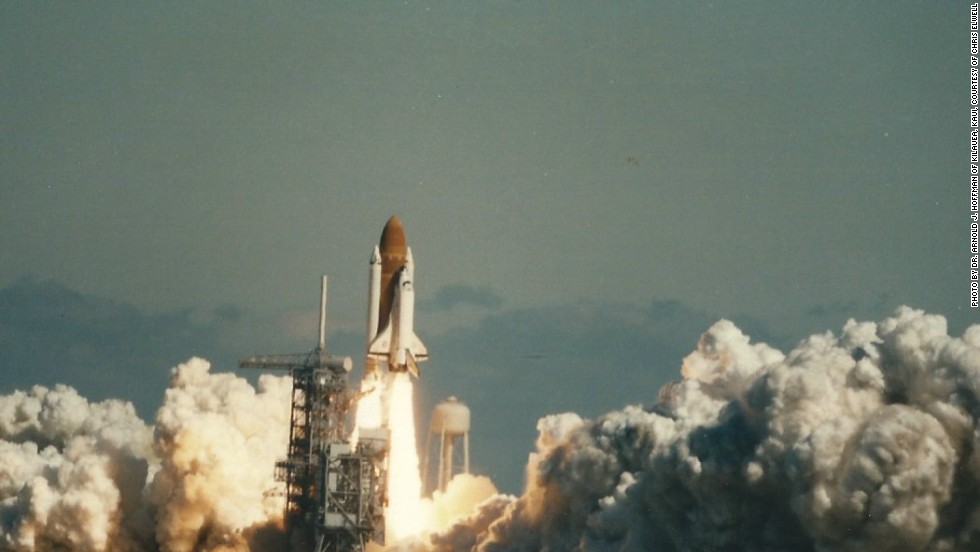The term "Challenger Explosion Capsule" has captured the attention of many across industries, particularly in engineering, safety, and disaster prevention. It refers to a critical concept that combines understanding the historical Challenger disaster with advanced safety mechanisms to prevent similar catastrophic events. This article delves into the significance of this topic and provides actionable insights to ensure safety in high-risk environments.
In an era where technology continues to evolve at an unprecedented pace, understanding the risks associated with explosive incidents is crucial. The Challenger disaster serves as a grim reminder of the importance of rigorous testing, safety protocols, and accountability in engineering practices. This article explores the concept of the Challenger Explosion Capsule and its implications in modern safety measures.
By examining the root causes of the Challenger explosion, we aim to provide a comprehensive guide that not only educates but also empowers readers to implement better safety protocols. Whether you're an engineer, safety professional, or simply someone interested in disaster prevention, this article offers valuable insights to mitigate risks effectively.
Read also:Best Remote Monitoring With Raspberry Pi Your Ultimate Guide
Table of Contents
- Introduction to Challenger Explosion Capsule
- Historical Background of Challenger Disaster
- Causes of the Challenger Explosion
- Understanding Explosion Capsule Technology
- Safety Protocols and Prevention
- Long-Term Impact of the Disaster
- Modern Technologies for Disaster Prevention
- Lessons Learned from the Challenger Incident
- Regulatory Framework and Compliance
- Future Perspectives and Conclusion
Introduction to Challenger Explosion Capsule
The concept of the "Challenger Explosion Capsule" refers to the technological and safety frameworks developed in response to the tragic explosion of the Space Shuttle Challenger in 1986. This capsule is not a literal object but rather a metaphorical representation of the systems and protocols designed to prevent such disasters. Understanding its components is essential for anyone involved in high-risk operations.
Why Is It Important?
The importance of the Challenger Explosion Capsule lies in its ability to encapsulate the lessons learned from the disaster. By analyzing the failures that led to the explosion, engineers and safety professionals can develop robust systems to prevent similar incidents. Key aspects include:
- Identifying potential failure points in engineering designs.
- Implementing rigorous testing and quality control measures.
- Ensuring transparency and accountability in decision-making processes.
Applications Across Industries
While the concept originated in the aerospace industry, its principles are applicable across various sectors, including:
- Chemical manufacturing
- Oil and gas exploration
- Construction
Each industry can adapt the principles of the Challenger Explosion Capsule to enhance safety and prevent catastrophic incidents.
Historical Background of Challenger Disaster
The Space Shuttle Challenger disaster occurred on January 28, 1986, when the shuttle disintegrated 73 seconds after launch, killing all seven crew members. This catastrophic event shocked the world and led to a thorough investigation into its causes. Understanding the historical context is crucial for appreciating the significance of the Challenger Explosion Capsule.
Key Facts About the Disaster
Some key facts about the Challenger disaster include:
Read also:Wwwmovierulzcom Kannada 2024 Your Ultimate Guide To The Latest Movie Trends
- The failure of the O-ring seals in the solid rocket boosters was the primary cause.
- Cold weather conditions exacerbated the problem, reducing the O-ring's effectiveness.
- Warnings from engineers about the potential risks were ignored by decision-makers.
Impact on the Aerospace Industry
The disaster had a profound impact on the aerospace industry, leading to significant changes in safety protocols and engineering practices. It underscored the importance of prioritizing safety over schedule and cost considerations.
Causes of the Challenger Explosion
The Challenger explosion was the result of a combination of technical, managerial, and environmental factors. Identifying these causes is critical for understanding how to prevent similar incidents in the future.
Technical Failures
Technical failures, particularly the malfunction of the O-ring seals, played a significant role in the disaster. According to a report by the Rogers Commission, the seals failed due to:
- Inadequate design for low-temperature conditions.
- Lack of redundancy in critical components.
Managerial Oversight
Managerial oversight also contributed to the disaster. Key issues included:
- Ignoring warnings from engineers about the risks of launching in cold weather.
- Pressuring teams to meet deadlines despite known safety concerns.
Understanding Explosion Capsule Technology
Explosion capsule technology refers to the systems and mechanisms designed to contain or mitigate the effects of explosive incidents. These technologies are essential for preventing catastrophic failures in high-risk environments.
Components of an Explosion Capsule
Key components of an explosion capsule include:
- Pressure relief valves
- Containment vessels
- Monitoring systems
Each component plays a critical role in ensuring the safety of operations and protecting personnel and equipment.
Safety Protocols and Prevention
Implementing effective safety protocols is crucial for preventing explosive incidents. These protocols should address both technical and managerial aspects of operations.
Technical Safety Measures
Technical safety measures include:
- Regular maintenance and inspection of critical components.
- Use of advanced materials and technologies to enhance safety.
Managerial Safety Practices
Managerial safety practices involve:
- Promoting a culture of safety within organizations.
- Encouraging open communication and transparency in decision-making.
Long-Term Impact of the Disaster
The Challenger disaster had a lasting impact on the aerospace industry and beyond. It led to significant changes in safety regulations and engineering practices, influencing how industries approach risk management.
Changes in Safety Regulations
Post-disaster reforms included:
- Stricter testing and certification requirements.
- Enhanced oversight by regulatory bodies.
Public Perception and Trust
The disaster also affected public perception of space exploration and trust in technological advancements. Efforts to rebuild trust focused on transparency and accountability in all aspects of operations.
Modern Technologies for Disaster Prevention
Advances in technology have significantly improved disaster prevention capabilities. From AI-driven predictive analytics to advanced materials, modern technologies offer innovative solutions for enhancing safety.
Artificial Intelligence in Safety
AI applications in safety include:
- Predictive maintenance to identify potential failures before they occur.
- Real-time monitoring of operational parameters.
Advanced Materials
Use of advanced materials, such as carbon fiber composites, enhances the durability and safety of critical components.
Lessons Learned from the Challenger Incident
The Challenger incident provided valuable lessons that continue to inform safety practices today. These lessons emphasize the importance of:
- Robust testing and validation processes.
- Transparency and communication in decision-making.
- Continuous improvement in safety protocols.
Regulatory Framework and Compliance
A strong regulatory framework is essential for ensuring compliance with safety standards. Regulatory bodies play a critical role in overseeing operations and enforcing safety regulations.
Key Regulatory Bodies
Some key regulatory bodies include:
- Federal Aviation Administration (FAA)
- Occupational Safety and Health Administration (OSHA)
Compliance Challenges
Challenges in achieving compliance include:
- Keeping up with evolving technologies and standards.
- Ensuring consistent application of regulations across industries.
Future Perspectives and Conclusion
The concept of the Challenger Explosion Capsule continues to evolve as new technologies and methodologies emerge. By learning from the past and embracing innovation, industries can enhance safety and prevent catastrophic incidents.
In conclusion, understanding the causes and implications of the Challenger disaster is essential for anyone involved in high-risk operations. By implementing robust safety protocols and leveraging modern technologies, we can create safer environments and protect lives. We invite readers to share their thoughts and experiences in the comments below and explore related articles on our site for further insights.

